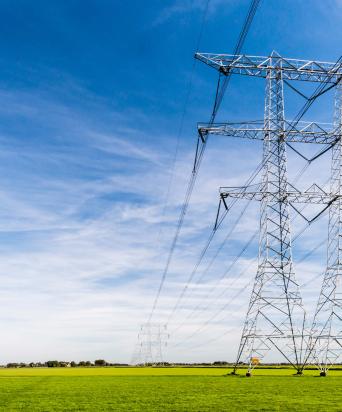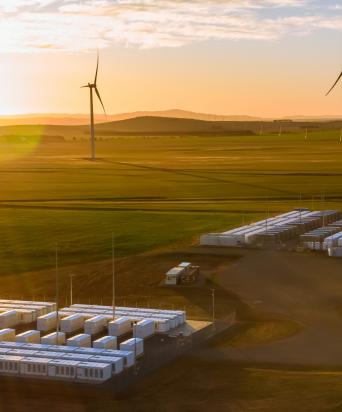From Capital to Capacity, Nuclear Is Scaling Up
Rising energy demand from companies and governments is catalyzing new investment in nuclear power.
Key Takeaways
- Nuclear power delivers clean, dispatchable baseload power that can help strengthen countries’ energy security.
- Governments worldwide are expanding their nuclear capacity, with many committing to tripling nuclear power generation by 2050.
- Rising energy needs from the AI buildout are accelerating investment from corporations into nuclear power generation.
After decades of stagnant growth, global electricity demand is surging. Artificial intelligence, electrification and industrialization are transforming the energy equation, multiplying the world’s need for dependable, large-scale power. Even progress is bound by the laws of physics: without steady, sufficient supply of power, growth stalls.
We believe that nuclear power will play a key role in helping the world meet its energy needs. As governments and corporates refine their approach to energy procurement, nuclear’s unique combination of scalable clean power generation and round-the-clock reliability will be essential.
Bruce Flatt on the Future of Nuclear Energy
Brookfield CEO Bruce Flatt joined CNBC Squawk on the Street in October 2025 to discuss the future of nuclear energy.
Nuclear Power Accelerates
Last year was a record for nuclear power generation globally, with new reactors helping the industry generate 2,667 terawatt hours (TWh) of electricity, surpassing the previous high set in 2006. For comparison, the EU’s total electricity demand was 2,725 TWh.1 And momentum for nuclear is building: 70 reactors are under construction worldwide, including in China, Egypt and the UAE.2
In the U.S., where nuclear already delivers about 20% of electricity, President Trump has signed executive orders to expand nuclear energy capacity from around 100 GW to 400 GW by 2050. The measures include a plan for 10 new large reactors to begin construction by 2030.3
Governments are accelerating these efforts because nuclear delivers what the world now needs most: scalable, carbon-free power that strengthens energy security at a time of geopolitical uncertainty. Today, nuclear power accounts for about 10% of the world’s electricity generation, and we expect it to rise in absolute terms as the world builds out its electricity supply.
While the 2010s saw some countries pause or scale back their use of nuclear, in recent years governments have been rethinking their nuclear energy policies. Countries that were resistant to nuclear during that period, particularly those in Europe, are now discussing reversing phase-outs, extending reactor lifespans, or commissioning new projects. More than 30 nations have endorsed the Declaration to Triple Nuclear Energy by 2050; more than 140 companies have also signed on.4
Figure 1: No Matter the Scenario, The World Needs More Nuclear Power
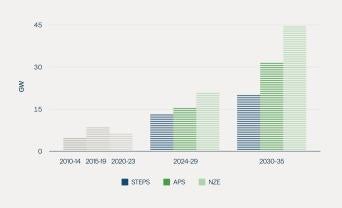
Source: IEA World Energy Outlook 2024. STEPS—Stated Policies Scenario. APS—Announced Pledges Scenario. NZE—Net Zero Emissions by 2050 Scenario.
Nuclear Provides a Comprehensive Power Solution
Corporates and governments are investing in nuclear power for many reasons. At Brookfield, we believe that no other dispatchable power source has such a favorable set of characteristics that equip it to meet the challenges of today’s world (see Figure 2):
- At a time of rising geopolitical tensions, nuclear helps to deliver energy security by reducing dependence on energy imports.
- It can help economies decarbonize, because no other baseload technology offers zero emissions at such scale.
- It helps stabilize electricity prices, protecting economies from volatile fuel markets.
- It can contribute to economic growth: The U.S. Department of Energy estimates that a tripling of America’s nuclear capacity would add 375,000 new jobs, compared with 100,000 professionals employed in the domestic nuclear industry today.5
Figure 2: Nuclear Power Checks All the Boxes
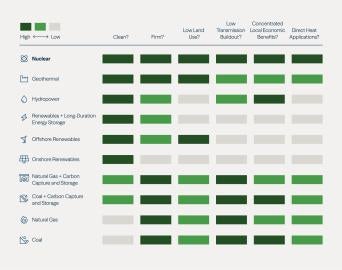
Source: U.S. Dept. of Energy, “Pathways to Commercial Liftoff: Advanced Nuclear,” Sept. 2024.
Westinghouse
Westinghouse, a U.S.-based Brookfield portfolio company, serves as the core service provider for about half of the world’s operating reactors. The company is at the cutting edge of nuclear reactor technology and is developing designs of various sizes and outputs—underscoring nuclear’s adaptability for many different use cases.
Westinghouse’s flagship reactor is the AP1000, a ~1,000-megawatt reactor that employs fully passive safety features. Rather than relying on active components, such as diesel generators and pumps, the AP1000 relies on natural forces—gravity, natural circulation and compressed gases—to keep the core and the containment from overheating.
There are six AP1000s in operation worldwide, with about 20 more in various stages of design and construction. This reactor has broken industry records in terms of availability and performance.6
Meeting AI’s Unprecedented Demand
Tech giants are leading the surge in energy demand as they build the foundation for AI use in the years ahead. Despite the large investments that have already taken place, much more is required: We estimate that the data center industry needs to more than triple capacity by 2030 to keep up with surging AI workloads. Global spending on baseload power and transmission infrastructure will be roughly $500 billion over the next 10 years.
Even with improved energy efficiency, these buildouts will require power beyond current grid capacity. We believe that at the upper end of AI campus scale (projects of 1 GW or more), electricity supply becomes a mission-critical concern. Advanced nuclear—which delivers one of the highest capacity factors among clean energy sources—can help these projects (see Figure 3). For instance, Facebook parent Meta recently signed a 20-year power purchase agreement with energy producer Constellation, contracting electricity from the relicensed Clinton Clean Energy Center nuclear plant in Illinois.7
That agreement is an example of hyperscalers and other major corporations directly contracting nuclear power to secure 24/7 clean baseload. Nuclear power is no longer just sold to governments and utilities but is being demanded by end users themselves.
Figure 3: Nuclear Provides the Most Consistent Clean Power Output
Capacity factors of U.S. renewable energy sources
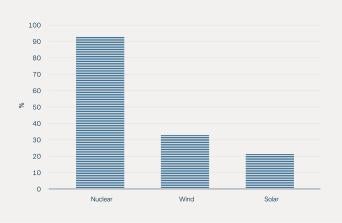
Source: U.S. Energy Information Administration Electric Power Annual Table 4.08.B and SEDS Table F38.
The moves by governments and corporations to change policies, contract for and help fund the nuclear buildout demonstrate why we believe the nuclear industry is at the beginning of an era of growth. Our view is that over the coming decades, hundreds of gigawatts of new nuclear capacity will need to be deployed, driven by AI, decarbonization and electrification.
Endnotes:
- Ember, “European Electricity Review 2025,” Jan. 23, 2025.
- World Nuclear Association, “Nuclear delivers record-breaking year in electricity generation,” Sept. 1, 2025.
- U.S. Department of Energy, “9 Key Takeaways from President Trump’s Executive Orders on Nuclear Energy,” Jun. 10, 2025.
- World Nuclear Association, “Major Global Companies Pledge Historic Support to Triple Nuclear Energy,” Mar. 12, 2025.
- U.S. Dept. of Energy, “Pathways to Commercial Liftoff: Advanced Nuclear,” Sept. 2024.
- Westinghouse.
- Constellation, “Constellation, Meta Sign 20-Year Deal for Clean, Reliable Nuclear Energy in Illinois,” Jun. 3, 2025.
Disclosures
This commentary and the information contained herein are for educational and informational purposes only and do not constitute, and should not be construed as, an offer to sell, or a solicitation of an offer to buy, any securities, related financial instruments or investment advisory services. This commentary discusses broad market, industry or sector trends, or other general economic or market conditions. It is not intended to provide an overview of the terms applicable to any products sponsored by Brookfield Asset Management Ltd. and its affiliates (together, "Brookfield").
This commentary contains information and views as of the date indicated and such information and views are subject to change without notice. Certain of the information provided herein has been prepared based on Brookfield's internal research and certain information is based on various assumptions made by Brookfield, any of which may prove to be incorrect. Brookfield may have not verified (and disclaims any obligation to verify) the accuracy or completeness of any information included herein including information that has been provided by third parties and you cannot rely on Brookfield as having verified such information. The information provided herein reflects Brookfield's perspectives and beliefs.
Investors should consult with their advisors prior to making an investment in any fund or program, including a Brookfield-sponsored fund or program.


